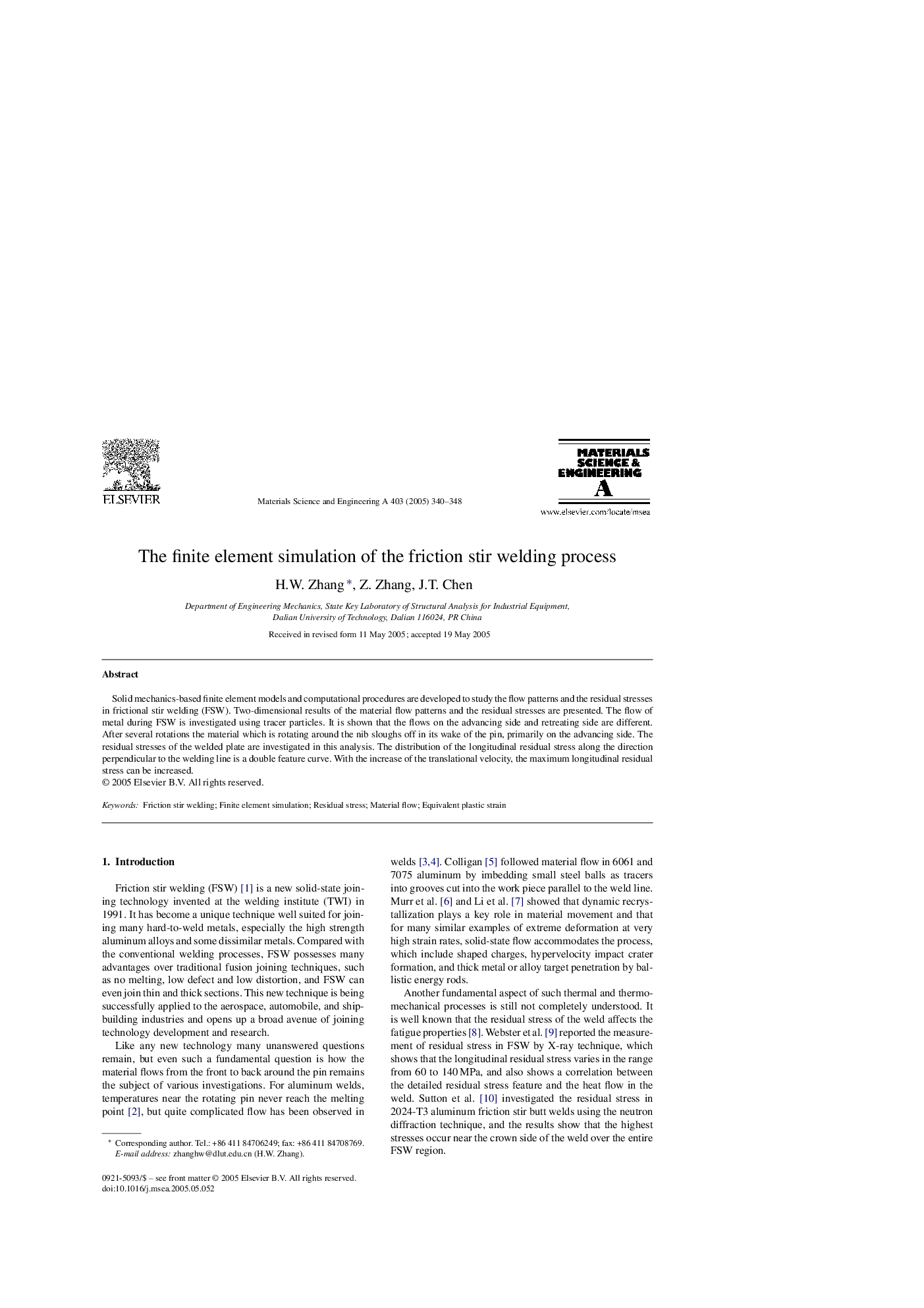| Article ID | Journal | Published Year | Pages | File Type |
|---|---|---|---|---|
| 9796015 | Materials Science and Engineering: A | 2005 | 9 Pages |
Abstract
Solid mechanics-based finite element models and computational procedures are developed to study the flow patterns and the residual stresses in frictional stir welding (FSW). Two-dimensional results of the material flow patterns and the residual stresses are presented. The flow of metal during FSW is investigated using tracer particles. It is shown that the flows on the advancing side and retreating side are different. After several rotations the material which is rotating around the nib sloughs off in its wake of the pin, primarily on the advancing side. The residual stresses of the welded plate are investigated in this analysis. The distribution of the longitudinal residual stress along the direction perpendicular to the welding line is a double feature curve. With the increase of the translational velocity, the maximum longitudinal residual stress can be increased.
Keywords
Related Topics
Physical Sciences and Engineering
Materials Science
Materials Science (General)
Authors
H.W. Zhang, Z. Zhang, J.T. Chen,
